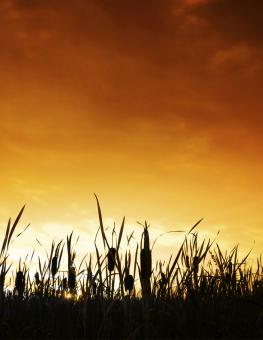
Manitoba Bioeconomy Atlas
The Manitoba Bioeconomy Atlas demonstrates the economic and ecological value of common wetland plants as a marketable feedstock for biomass energy—all with the goal of creating a healthier Lake Winnipeg basin and developing a Manitoba bioeconomy.
The Manitoba Bioeconomy Atlas has been disabled. If you want to learn more about our work championing nature-based solutions, click here.
The Manitoba Bioeconomy Atlas demonstrates the economic and ecological value of common wetland plants as a marketable feedstock for biomass energy—all with the goal of creating a healthier Lake Winnipeg basin and developing a Manitoba bioeconomy.
The Manitoba Bioeconomy Atlas realizes a web-based spatial inventory of conventional and unconventional biomass sources; using a custom model to determine optimal sites for biomass refineries and thermal facilities; and provide a tool to support stakeholder decisions, markets and policies in the production of Manitoba’s bioeconomy.
If you are a biomass producer, it can help you work out how much biomass you have and how much it is worth.
If you are a biomass consumer, it can help you source biomass, calculate how much it costs and learn why using biomass is the environmentally friendly and economic choice.
Come and explore the Manitoba Bioeconomy Atlas and learn the landscape of Manitoba’s biomass resources and how this province can develop a sustainable economy for the 21st century.
Participating experts
You might also be interested in
How can we improve on freshwater health and prevent plastic pollution?
INC-4 is the fourth meeting in a series of international negotiations that aims to develop a global treaty on plastic pollution that could and should have big implications for freshwater quality both in Canada and beyond.
What Is the UAE Framework for Global Climate Resilience, and How Can Countries Move It Forward?
With the introduction of the new framework for the Global Goal on Adaptation (GGA), COP 28 marked a milestone for adaptation. We unpack key outputs and set out how countries can move forward by strengthening their national monitoring, evaluation, and learning (MEL) systems.
India's stance at WTO balances fisheries subsidies for artisanal fishers and sectoral growth
India is likely to advocate for securing the interests of its artisanal fishers while facilitating the growth of the fishing sector at the World Trade Organisation's 13th Ministerial Conference (MC13) in Abu Dhabi later this month. At the MC13, scheduled from February 26 to February 29, world leaders will negotiate on regulating fisheries subsidies that contribute to excessive fishing effort and capacity.
National State of the Environment Report: Uzbekistan
The National State of the Environment Report (NSoER) is a comprehensive document that provides a snapshot of current environmental trends in Uzbekistan's socio-economic development for citizens, experts, and policy-makers in the country of Uzbekistan.